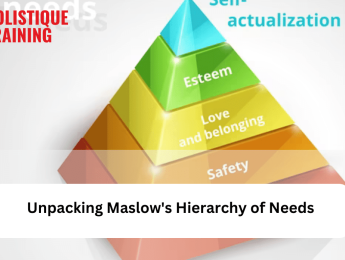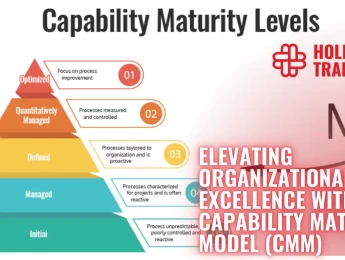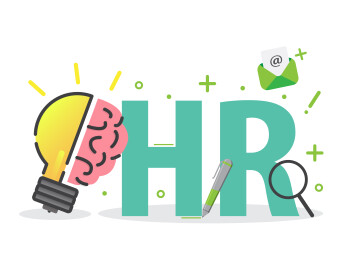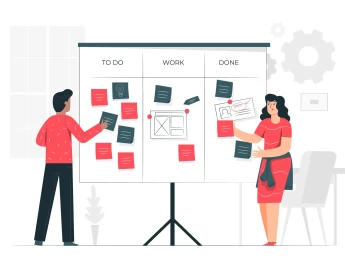- Table of Contents
- Introduction
- Unpacking Maslow's Hierarchy of Needs
- Physiological Needs
- Safety Needs
- Love and Belongingness Needs
- Esteem Needs
- Self-Actualisation Needs
- Applying Maslow's Hierarchy of Needs to Employee Engagement
- Physiological Needs in the Workplace
- Table 1: Maslow’s Hierarchy of Needs and How It Translates in the Workplace
- Safety Needs and Employee Security
- Love and Belongingness in Teams
- Addressing Esteem Needs
- Self-Actualisation and Personal Growth
- A Holistic Approach to Employee Engagement
- The Impact of Remote Work on Employee Engagement
- Table 2: Strategies for Addressing Employee Needs in a Remote Work Environment
- The Role of Leadership in Employee Engagement
- Technology and Employee Engagement
- Physiological Needs
- Safety Needs
- Love and Belongingness
- Esteem Needs
- Self-Actualisation
- Measuring Employee Engagement
- 1. Employee Engagement Surveys
- 2. Feedback Mechanisms
- 3. Performance Metrics
- 4. Net Promoter Score (NPS)
- 5. Stay Interviews
- 6. Social Media and Online Platforms
- 7. Focus Groups
- 8. Benchmarking
- 9. 360-Degree Feedback
- 10. Continuous Improvement
- The Future of Employee Engagement
- A. Hybrid and Remote Work Models
- B. Well-Being and Mental Health Support
- C. Customisation and Personalisation
- D. Continuous Feedback and Pulse Surveys
- E. DEI (Diversity, Equity, and Inclusion)
- F. Learning and Development
- G. Technology Integration
- H. Employee Resource Groups
- I. Flexibility and Work-Life Integration
- J. Social Responsibility and Purpose-Driven Work
- Conclusion
Introduction
In the realm of human psychology and motivation, few concepts have garnered as much attention and applicability as Abraham Maslow's Hierarchy of Needs. Developed in the mid-20th century, this theory has been widely adopted and adapted to various contexts. One area where it finds profound relevance is in understanding employee engagement – a critical factor in the success of any organisation. In this article, we will delve into Maslow's Hierarchy of Needs, explore its five components, and decipher how it can be applied to enhance employee engagement.
Unpacking Maslow's Hierarchy of Needs
Abraham Maslow's Hierarchy of Needs is a psychological theory that outlines a hierarchy of human needs, arranged in a pyramid structure. The theory posits that individuals are motivated to fulfil these needs in a sequential manner, with the most basic needs taking precedence before the higher-order needs come into play. The five components of Maslow's Hierarchy of Needs, from the bottom to the top, are as follows:
Physiological Needs
At the base of the pyramid lie the physiological needs, which encompass the basic survival requirements such as food, water, shelter, and sleep. These needs are the most fundamental and must be satisfied before an individual can focus on higher-level needs.
In the workplace, addressing physiological needs involves more than just providing a paycheck. It extends to creating an environment where employees have access to nutritious food options, clean drinking water, comfortable workspace temperatures, and restful break areas. Additionally, organisations can promote physical well-being by offering wellness programmes, gym facilities, or ergonomic office furniture to support employees' health.
Safety Needs
Once physiological needs are met, the focus shifts to safety needs. This category includes the desire for personal security, financial stability, health, and protection from harm. People strive for stability and predictability in their lives, as a lack of safety can create anxiety and hinder personal growth.
To fulfil safety needs, organisations can go beyond job security by establishing clear safety protocols, offering comprehensive healthcare benefits, and providing financial planning resources. Open communication about workplace safety measures and emergency procedures is also essential to foster a sense of security among employees.
Love and Belongingness Needs
As one moves up the pyramid, the next set of needs pertains to social connections and relationships. Humans are inherently social creatures, seeking companionship, friendship, and a sense of belonging. Love, affection, and acceptance play a pivotal role in fulfilling these needs.
In the workplace, creating a sense of belonging among employees is crucial for engagement. Organisations can achieve this by encouraging team collaboration, fostering a positive and inclusive culture, and organising social events or team-building activities. Effective communication channels, both formal and informal, also facilitate strong interpersonal relationships among employees.
Esteem Needs
Above the previous needs, individuals seek to establish a sense of self-esteem and self-worth. This involves gaining recognition, respect, and validation from others, as well as cultivating a positive self-image. Achievements and accomplishments contribute to fulfilling esteem needs.
To address esteem needs, organisations can implement recognition programmes that acknowledge and celebrate employee achievements. Regular feedback sessions, performance appraisals, and opportunities for skill development contribute to employees' sense of self-worth. Moreover, promoting a culture of respect and appreciation at all levels of the organisation fosters a positive work environment.
Self-Actualisation Needs
At the pinnacle of the hierarchy, self-actualisation needs come into play. This is the pursuit of realising one's full potential, achieving personal growth, and engaging in activities that align with one's values and passions. Self-actualisation represents a state of fulfilment and a deep sense of purpose.
To support self-actualisation needs, organisations can encourage employees to take ownership of their career development. This may involve offering autonomy in decision-making, opportunities for innovation, and projects aligned with employees' personal interests. Providing access to mentorship, coaching, and continuous learning opportunities also contributes to employees' pursuit of self-actualisation.
Applying Maslow's Hierarchy of Needs to Employee Engagement
Now that we have a solid grasp of Maslow's Hierarchy of Needs and its components, let's dive deeper into how these principles can be practically applied to enhance employee engagement within organisations. By understanding each level of the hierarchy and its implications, organisations can create targeted strategies that resonate with their employees' needs and foster a more engaged workforce.
Let’s just start by saying that 90% of employees are more likely to remain with a company if their employer empathises with their needs, according to Clear Company. So, how do companies do that by relying on Maslow’s Hierarchy of Needs? Let’s find out:
Physiological Needs in the Workplace
Ensuring that employees' basic physiological needs are met is the foundation of a healthy and engaged workforce. Beyond the provision of a comfortable workspace and access to amenities, organisations can take additional steps. For instance, offering flexible work hours or remote work options can help employees better manage their work-life balance, which in turn positively impacts their physiological well-being.
Table 1: Maslow’s Hierarchy of Needs and How It Translates in the Workplace
Need Component | Description |
Physiological Needs | Basic survival requirements like food, shelter, and health. Workplace: Safe, comfortable, fair compensation. |
Safety Needs | Desire for security, financial stability, and protection. Workplace: Job security, transparency, benefits. |
Love and Belongingness | Seeking companionship, inclusion, and positive relationships. Workplace: Collaboration, team-building, inclusivity. |
Esteem Needs | Establishing self-worth, recognition, and skill development. Workplace: Appreciation, feedback, advancement. |
Self-Actualisation Needs | Pursuit of potential, growth, and meaningful work. Workplace: Personal growth, autonomy, innovation. |
Safety Needs and Employee Security
A sense of job security and financial stability are paramount for employee engagement. Organisations can communicate transparently about the company's financial health and prospects, reassuring employees about their tenure. In fact, Aon Hewitt's 2013 report on Global Trends has unveiled that pay has emerged as the third most influential catalyst for engagement, a notable ascent from its sixth position in the preceding year of 2012. That’s why it’s important to offer competitive compensation and benefits packages, which demonstrates a commitment to employees' safety needs.
Love and Belongingness in Teams
Building strong relationships and a sense of belonging within teams enhances employee engagement. Encouraging collaboration, setting up cross-functional projects, and organising team-building activities help employees bond and create a supportive network.
Addressing Esteem Needs
Recognising and appreciating employees' contributions is a powerful way to satisfy esteem needs. Regular feedback sessions, both formal and informal, can provide employees with insights into their strengths and areas for improvement. Opportunities for skill development and advancement also contribute to meeting esteem needs.
Self-Actualisation and Personal Growth
Empowering employees to pursue personal growth opportunities aligns with their self-actualisation needs. Encouraging innovation, autonomy, and creativity in their roles can make employees feel that their work is meaningful and aligned with their aspirations.
By adopting a strategic approach that acknowledges the significance of each level of the hierarchy, organisations can create an environment that supports employee engagement. However, it's essential to remember that these needs are interconnected and not strictly sequential. Employees may have simultaneous needs from different levels, making it necessary for organisations to offer a holistic and comprehensive approach to engagement.
A Holistic Approach to Employee Engagement
The application of Maslow's Hierarchy of Needs to employee engagement underscores the importance of a holistic approach. Recognising that employees have diverse needs and aspirations, organisations can tailor their strategies to address different levels of the hierarchy.
Moreover, it's important to note that the hierarchy is not strictly linear. While the theory suggests a progression from one level to the next, individuals can experience needs from multiple levels simultaneously. For instance, an employee may be striving to fulfil safety needs while also seeking opportunities for self-actualisation.
Organisations that truly excel in employee engagement understand the interplay between these needs and create an environment that supports well-being, growth, and fulfilment. By fostering a culture of open communication, empathy, and continuous development, they create a workplace where employees thrive on multiple fronts.
The Impact of Remote Work on Employee Engagement
In recent years, the rise of remote work has posed new challenges and opportunities for employee engagement. With employees working from various locations and often in isolation, organisations must adapt their strategies to meet the evolving needs of their workforce. The pyramid of Maslow's Hierarchy of Needs remains relevant, but the way in which each level is addressed has changed.
In a remote work environment, addressing physiological needs may involve providing stipends for home office setups and ergonomic furniture. Safety needs can be met by offering job security, clear communication channels, and mental health support for remote workers. Love and belongingness can be fostered through virtual team-building activities, online social gatherings, and regular video conferencing to maintain a sense of connection.
The challenge lies in addressing esteem and self-actualisation needs when employees are physically distant. Organisations must find creative ways to recognise and reward remote employees, offer opportunities for skill development through online courses and webinars, and encourage employees to set and pursue personal growth goals even in a virtual setting.
Table 2: Strategies for Addressing Employee Needs in a Remote Work Environment

The Role of Leadership in Employee Engagement
While Maslow's Hierarchy of Needs provides a valuable framework for understanding employee engagement, the role of leadership in this process cannot be overstated. Effective leadership is the linchpin that ensures the successful application of these principles.
Leaders must lead by example, demonstrating empathy, active listening, and a genuine concern for their team members' well-being. They should communicate openly and transparently about the organisation's goals, challenges, and prospects, addressing safety and security needs.
Furthermore, leaders should actively promote a culture of recognition and continuous feedback, which fulfils esteem needs. They can empower employees by providing opportunities for skill development and advancement, thus aligning with self-actualisation needs.
Technology and Employee Engagement
In our increasingly digital world, technology plays a pivotal role in enhancing employee engagement. Organisations are leveraging technology to create innovative solutions that cater to employees' needs across all levels of Maslow's Hierarchy.
Physiological Needs
Technology allows for flexible work arrangements, including remote work and flexible hours. Virtual wellness programmes and health apps help employees take care of their physical well-being.
Safety Needs
HR software and communication tools enable organisations to keep employees informed about company policies, benefits, and safety measures. Online financial planning resources and secure digital transactions ensure financial stability and security.
Love and Belongingness
Social media platforms and collaboration software facilitate connections among remote or dispersed teams. Virtual team-building activities and online forums create a sense of belonging.
Esteem Needs
Performance management software supports continuous feedback and recognition. Online learning platforms offer opportunities for skill development and career advancement.
Self-Actualisation
Technology-driven innovation projects and personalised career development plans enable employees to pursue their passions and reach their full potential.
Measuring Employee Engagement
To ensure the effectiveness of employee engagement strategies, organisations must employ measurement and feedback mechanisms. Understanding the pulse of your workforce helps in identifying areas that require attention and improvement. Here are some essential aspects of measuring employee engagement:
1. Employee Engagement Surveys
Conducting regular employee engagement surveys is a fundamental approach. These surveys typically consist of a set of questions designed to gauge employees' attitudes and satisfaction levels. The results provide valuable insights into which areas of the organisation are succeeding in engaging employees and where there might be issues. Key points to consider:
Frequency: Annual surveys are common, but more frequent pulse surveys (quarterly or semi-annually) can offer more timely feedback.
Anonymity: Ensure that responses are anonymous to encourage honest and candid feedback.
Actionable Questions: Craft questions that are specific and actionable to address areas of improvement.
2. Feedback Mechanisms
In addition to formal surveys, provide multiple avenues for employees to provide feedback on their experiences. This can include regular one-on-one meetings between employees and managers, open-door policies, and anonymous suggestion boxes. The goal is to create a culture of continuous feedback and improvement.
3. Performance Metrics
Key performance indicators (KPIs) can offer indirect insights into employee engagement. Metrics such as productivity, turnover rates, absenteeism, and project completion rates can indicate the overall health of employee engagement. Frequent fluctuations or declines in these metrics may signal engagement issues.
4. Net Promoter Score (NPS)
NPS, commonly used in customer satisfaction, can also be applied to employee engagement. Employees are asked a simple question: "On a scale of 0 to 10, how likely are you to recommend this organisation as a place to work?" Those who respond with a 9 or 10 are considered "promoters," while those who score 0 to 6 are "detractors." Calculating the NPS provides a quantitative measure of employee loyalty and satisfaction.
5. Stay Interviews
Similar to exit interviews, stay interviews are conducted with current employees to understand their motivations, needs, and potential areas of concern. These interviews can help organisations proactively address issues before they lead to disengagement or turnover.
6. Social Media and Online Platforms
Monitoring employee discussions and sentiments on social media and internal collaboration platforms can provide real-time insights into their engagement levels. Pay attention to both positive and negative discussions to identify areas for improvement.
7. Focus Groups
Convening focus groups of employees from different levels and departments can yield qualitative data on engagement. These discussions can uncover underlying issues and provide context for survey results.
8. Benchmarking
Comparing your organisation's engagement metrics with industry benchmarks or similar companies can provide valuable context. It helps in understanding where you stand relative to your peers and areas where you might need to catch up or excel.
9. 360-Degree Feedback
360-degree feedback involves collecting input from an employee's peers, subordinates, supervisors, and even customers. This comprehensive approach can offer a well-rounded view of an employee's engagement and performance.
10. Continuous Improvement
Measuring engagement is not a one-time effort. It's an ongoing process that requires regular reassessment and adjustment of strategies. Use the data collected to make informed decisions, implement changes, and track progress over time.
Remember that the effectiveness of your measurement efforts depends on the willingness of employees to provide honest feedback and the organisation's commitment to acting on that feedback. Ultimately, the goal is not just to measure engagement but to create a culture where employees feel heard, valued, and engaged in their work.
The Future of Employee Engagement
As workplaces continue to evolve, so too will the strategies for employee engagement. Organisations must stay attuned to emerging trends and challenges to ensure they remain at the forefront of fostering a highly engaged workforce. Here are some key considerations and trends for the future of employee engagement:
A. Hybrid and Remote Work Models
The COVID-19 pandemic accelerated the adoption of remote work, and many organisations are embracing hybrid work models, allowing employees to split their time between office and remote work. In this context, employee engagement strategies must adapt to support both in-person and remote teams. The challenge lies in maintaining a sense of belonging and ensuring that remote workers feel equally valued and connected.
B. Well-Being and Mental Health Support
Employee well-being has gained prominence as a crucial component of engagement. Organisations are increasingly investing in mental health resources and wellness programmes to help employees cope with the stress and isolation associated with remote work. Recognising and addressing the mental health needs of employees will be an ongoing priority.
C. Customisation and Personalisation
One size does not fit all when it comes to engagement. Organisations are recognising the importance of tailoring their strategies to meet the unique needs of individual employees. Personalised development plans, flexible work arrangements, and benefits packages that cater to diverse lifestyles and preferences are becoming more prevalent.
D. Continuous Feedback and Pulse Surveys
Annual performance reviews are giving way to continuous feedback loops. Employees now expect regular check-ins with their managers to discuss goals, progress, and development opportunities. Pulse surveys and real-time feedback mechanisms provide organisations with timely insights into employee sentiments, enabling them to address issues promptly.
E. DEI (Diversity, Equity, and Inclusion)
Diversity, equity, and inclusion are no longer optional but fundamental to employee engagement. Organisations are focusing on creating inclusive cultures that celebrate diversity and provide equal opportunities for all employees. This includes addressing biases, promoting fairness in promotions and compensation, and fostering an environment where everyone feels heard and valued.
F. Learning and Development
Employees are increasingly seeking opportunities for growth and skill development within their organisations. Learning and development programmes, mentorship initiatives, and access to online courses are being prioritised to help employees upskill and advance their careers while contributing to their sense of self-actualisation.
G. Technology Integration
Technology will continue to play a pivotal role in employee engagement. HR tech solutions, collaboration platforms, and data analytics tools enable organisations to measure and enhance engagement effectively. Artificial intelligence and machine learning can provide insights into engagement drivers and predict potential issues.
H. Employee Resource Groups
Employee resource groups (ERGs) are gaining traction as a means to foster belongingness and diversity within organisations. These groups provide spaces for employees to connect, share experiences, and drive positive change within the workplace.
I. Flexibility and Work-Life Integration
The blurring of work and personal life boundaries requires organisations to prioritise work-life balance. Offering flexible schedules, mental health days, and encouraging employees to unplug during non-working hours can significantly impact engagement.
J. Social Responsibility and Purpose-Driven Work
Employees are increasingly seeking organisations with a strong sense of social responsibility and a clear purpose beyond profits. Engaging employees in meaningful corporate social responsibility initiatives and connecting their work to a larger purpose can enhance engagement and retention.
In this ever-changing landscape, the principles of Maslow's Hierarchy of Needs will remain a guiding light for organisations seeking to create environments where employees not only thrive but also find purpose and fulfilment in their work. By adapting and innovating in response to new challenges and opportunities, organisations can unlock the full potential of their most valuable asset—their people. Employee engagement is not a destination but an ongoing journey, and the future promises exciting developments in this critical field.
Conclusion
The application of Maslow's Hierarchy of Needs to employee engagement isn't just a theoretical concept; it's a practical roadmap for organisations to create an environment where employees flourish. From addressing fundamental physiological needs to nurturing self-actualisation, each level of the hierarchy plays a crucial role in shaping employees' experiences and contributions within the workplace.
Ultimately, employee engagement is about recognising that employees are not just assets but individuals with intricate needs and aspirations. When organisations embrace this perspective and tailor their strategies to meet these needs, they unlock a powerful force of motivation and dedication. The journey toward employee engagement is an ongoing one, marked by continuous communication, adaptation, and a commitment to fostering an environment where employees can thrive holistically.
In this pursuit, organisations don't just elevate their bottom lines – they also foster a culture of mutual respect, growth, and shared success. As you embark on this journey of understanding and implementing the principles of employee engagement, we invite you to explore our course ‘Technological Leadership for the Digital Era.’ This comprehensive course delves into the strategies and skills needed to lead in today's rapidly evolving technological landscape, empowering you to create an environment where both employees and organisations thrive. Discover more about the course here and take the next step toward transformative leadership in the digital age.

























